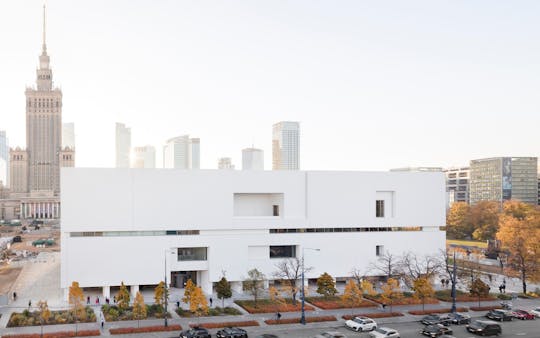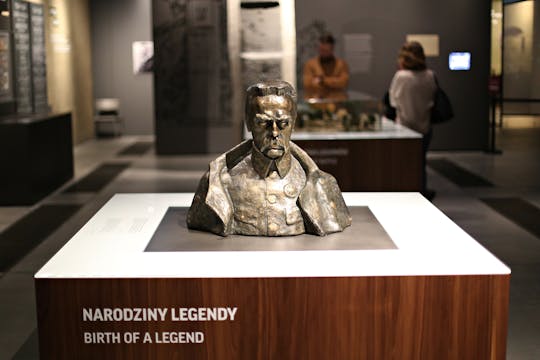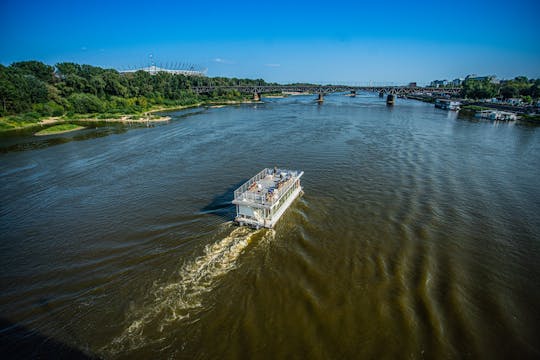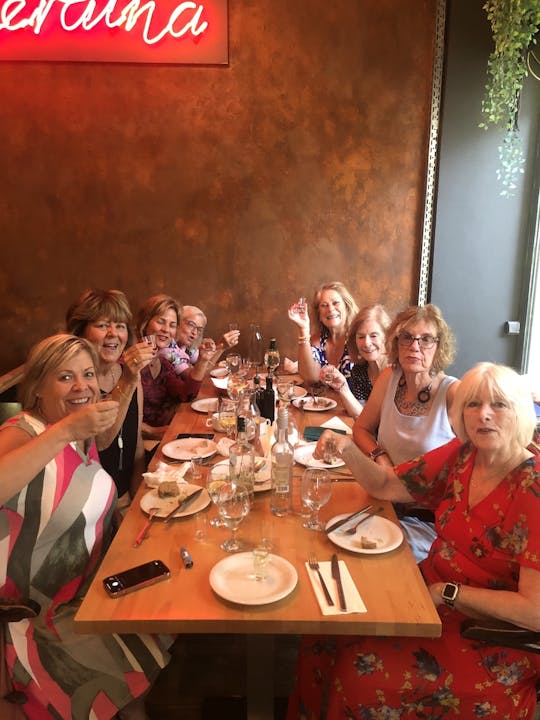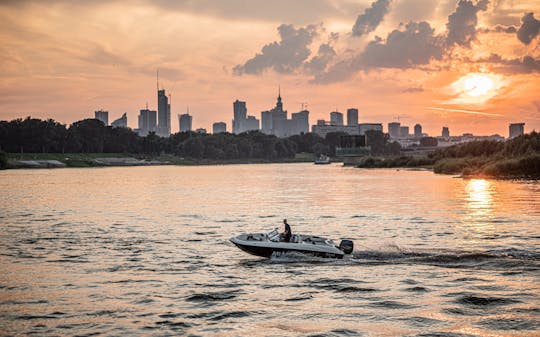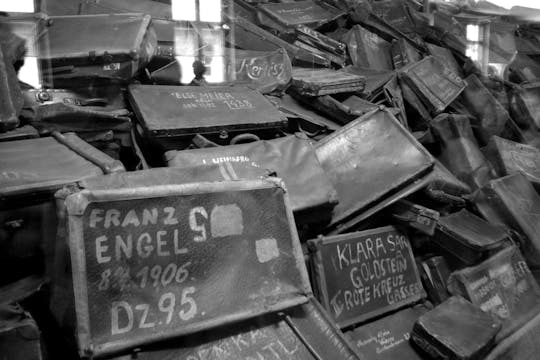Instagram
Attractions & guided tours
Tickets to The Impermanent: Four Takes on the Collection
Warsaw, Poland
Free Cancellation
Language:
English
,
Polish
Mobile voucher accepted
Duration: Fixable
Do this because
The exhibition introduces you to an extensive collection of works from the 1950s to present
You'll encounter Alina Szapocznikow’s sculpture "Friendship" and Nikita Kadan's steel banner in the first section
A highlight is Sylvie Fleury's sculpture in the "Synthetic Materialities" part, exploring consumerist desires
There will be a focus on non-modernist traditions in the "Dark Planet" chapter, inspired by Roman Stańczak's work
This is an opportunity to reflect on art's limits in the final chapter, featuring Monika Sosnowska’s "Façade"
What to expect
The exhibition showcases a collection of works from the 1950s to the present, reflects the ever-evolving canon of contemporary artworks. It includes artists' archives and a film library, reflecting a wide range of media and artistic approaches.The exhibition is divided into 4 chapters. The first chapter, 'Banner: Engagement, Realism, and Political Art', curated by Sebastian Cichocki, features works related to political engagement and faith in art's transformative power.
The second chapter, "Synthetic Materialities: Body, Commodity and Fetish from the Cold War to the Present", curated by Tomasz Fudala and Natalia Sielewicz, explores consumerist desires and fascination with pop culture, advertising,...
Read More
What's included
Entrance fees
Audio guide
What to remember
Know in advance:
Reduced admission is available to: students of schools in the education system, and students over 26 years of age, doctoral students, students of colleges of social service workers; people 65+, retirees, pensioners, social pensioners, disabled people and their carers, veterans; teachers of schools and educational institutions, correctional facilities and shelters for minors; natural persons awarded the badge "For the care of monuments", the honorary badge "Distinguished Cultural Activist", the honorary badge "Merit for Polish Culture" or the honorary title "Merit for National Culture"; members of Associations whose statutes include provisions regarding activities related to Art; journalists. Please present a document at the reception desk to confirm eligibility
People under the age of 13 can only attend the exhibition accompanied by an adult
The audioguide is available in English and Polish, and it's free of charge. Please ask the staff at the reception desk for the device
Some works in the exhibition contain sensitive content, depicting nudity, raising the issue of violence, or referring to traumatic experiences. A map is available at the reception desk and on the website identifying the location of these works in the exhibition space. The map includes a precise description of the sensitive content, so visitors can choose their own experience and how they wish to view the exhibition
Provider
BILEDO Sp. z o.o
Booking Fee
Good news! No extra fees are applied to this booking.
Cancellation Fee
Receive a 100% refund if you cancel up to 1 day before the experience begins
Where
Museum of Modern Art, Marszałkowska, Warsaw, Poland
Meeting point:
Please present your ticket at the Museum of Modern Art. After scanning, your ticket is valid for 3 hours.
You might also like
Tickets and events
Explore the life of Józef Piłsudski through a...
Warsaw, Poland
Instant Confirmation
Fee Cancellation
From:
$ 6.00
Activities
Get to know Polish vodka on a 3.5-hour tour....
Warsaw, Poland
Instant Confirmation
Fee Cancellation
From:
$ 106.00
Activities
Enjoy a relaxing cruise along the Vistula Riv...
Warsaw, Poland
Instant Confirmation
Fee Cancellation
From:
$ 25.00
Tickets and events
Embark on a wildlife adventure at Warsaw Zoo....
Warsaw, Poland
Instant Confirmation
Fee Cancellation
From:
$ 11.00
Excursions & day trips
Experience Warsaw's skyline on a Vistula Rive...
Warsaw, Poland
Instant Confirmation
Fee Cancellation
From:
$ 25.00
Activities
Discover Warsaw in a unique way: find clues a...
Warsaw, Poland
Instant Confirmation
Fee Cancellation
From:
$ 36.00
Attractions & guided tours
Experience Warsaw through the eyes of compose...
Warsaw, Poland
Instant Confirmation
Fee Cancellation
From:
$ 166.00
Activities
Experience the nightlife of Warsaw with fun l...
Warsaw, Poland
Instant Confirmation
Fee Cancellation
From:
$ 33.00
Excursions & day trips
Learn about the world of vodka on this vodka...
Warsaw, Poland
Instant Confirmation
Fee Cancellation
From:
$ 42.00
Excursions & day trips
Enjoy a romantic sunset cruise on Warsaw's Vi...
Warsaw, Poland
Instant Confirmation
Fee Cancellation
From:
$ 217.00
Activities
Mission at the zoo Warsaw is an advanced appl...
Warsaw, Poland
Instant Confirmation
Fee Cancellation
From:
$ 60.00
Attractions & guided tours
Visit the Auschwitz Memorial and Museum near...
Warsaw, Poland
Instant Confirmation
Fee Cancellation
From:
$ 112.00
Activities
Discover Suntago, Europe's largest indoor wat...
Warsaw, Poland
Instant Confirmation
Fee Cancellation
From:
$ 42.00
Excursions & day trips
Experience Warsaw's iconic sights from the Vi...
Warsaw, Poland
Instant Confirmation
Fee Cancellation
From:
$ 182.00
Excursions & day trips
Experience the nightlife of Warsaw in the bes...
Warsaw, Poland
Instant Confirmation
Fee Cancellation
From:
$ 251.00
Made with ❤ in Santa Catarina.
Copyright © 2025 by Tripdo.




